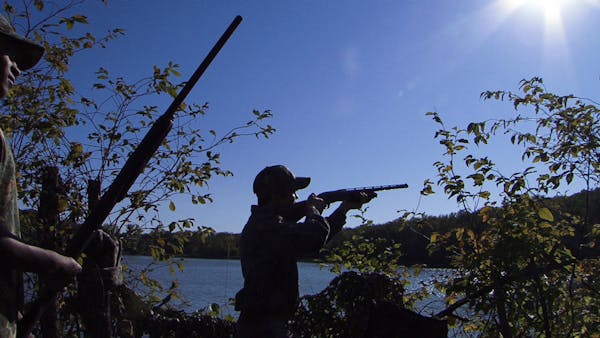BRAINERD, MINN. - It was just before sunrise when Rolf Moen of Nisswa and I shoved off from a secluded boat landing Saturday, the opening day of Minnesota's 2008 duck hunting season.
Not until 9 a.m. would ducks become legal targets, but to watch a sunrise over a duck slough, and to witness an awakening of a marsh, was reason enough for our early launch.
On board canine-wise, were Annie, Rolf's pudelpointer, and Axel, my Deutsch Drahthaar. As we motored toward our destination, we parted flocks of coots, the gangly grey birds running across the water before gaining flight. The two dogs nervously watched the retreating coots, a mere persuasion away from bailing out.
Less than 12 hours earlier I had scouted these same waters, and was disappointed by the shortage of ducks. A few days earlier large flocks of wood ducks and teal had used this marsh, but a significant percentage of the birds apparently had left.
As opening time approached, we tossed out a dozen or so decoys. Then Rolf fashioned a crude blind atop a giant beaver lodge while I moved several hundred yards up the shoreline.
Time passes slowly while waiting for shooting time to arrive, but what a glorious morning to be on a marsh. A dawn mist rose over the wild rice, and the shoreline was aglow with brilliant hues of red, orange, yellow and green.
It was a minute or two past 9 when the initial shots sounded south of us. Ducks began trading back and forth, and when a blue-winged teal passed low in front of me I downed the bird, and Axel leaped from the boat to make the retrieve.
Minutes later Rolf dropped a hen wood duck.
Now gunfire echoed up and down the marsh. Shortly another blue-winged teal swept in low in typical fashion and the bird fell to water when I shot.
I stood in the boat and watched as Axel returned with the teal, and at that moment a hen wood duck tried to sneak past.
My initial two shots went astray, but the fast-retreating duck folded on third try. I dropped a second wood duck a few minutes later.
With my limit of two wood ducks in my boat I watched the next woodie pass.
The duck angled toward Rolf and at his shot it sputtered in the air, then crashed into the woods behind him.
By early afternoon, I had my limit of six ducks, and Rolf needed one more bird to fill his bag. We decided to change locations but ultimately, we ended our hunt about 2 p.m. with Rolf one duck short of his limit.
Our bag consisted of four wood ducks, five blue-winged teal, one green-winged teal, and one mallard. As usual, scouting and pre-hunt preparation was the key to our success.

Gophers women's basketball dominates UMass Lowell for 3-0 start
Already missing Mitchell, Gophers could be without Garcia on Wednesday, too

How Zoll worked to become the seventh general manager in Twins history

Reusse: Outgoing Twins President St. Peter was always right for the job

